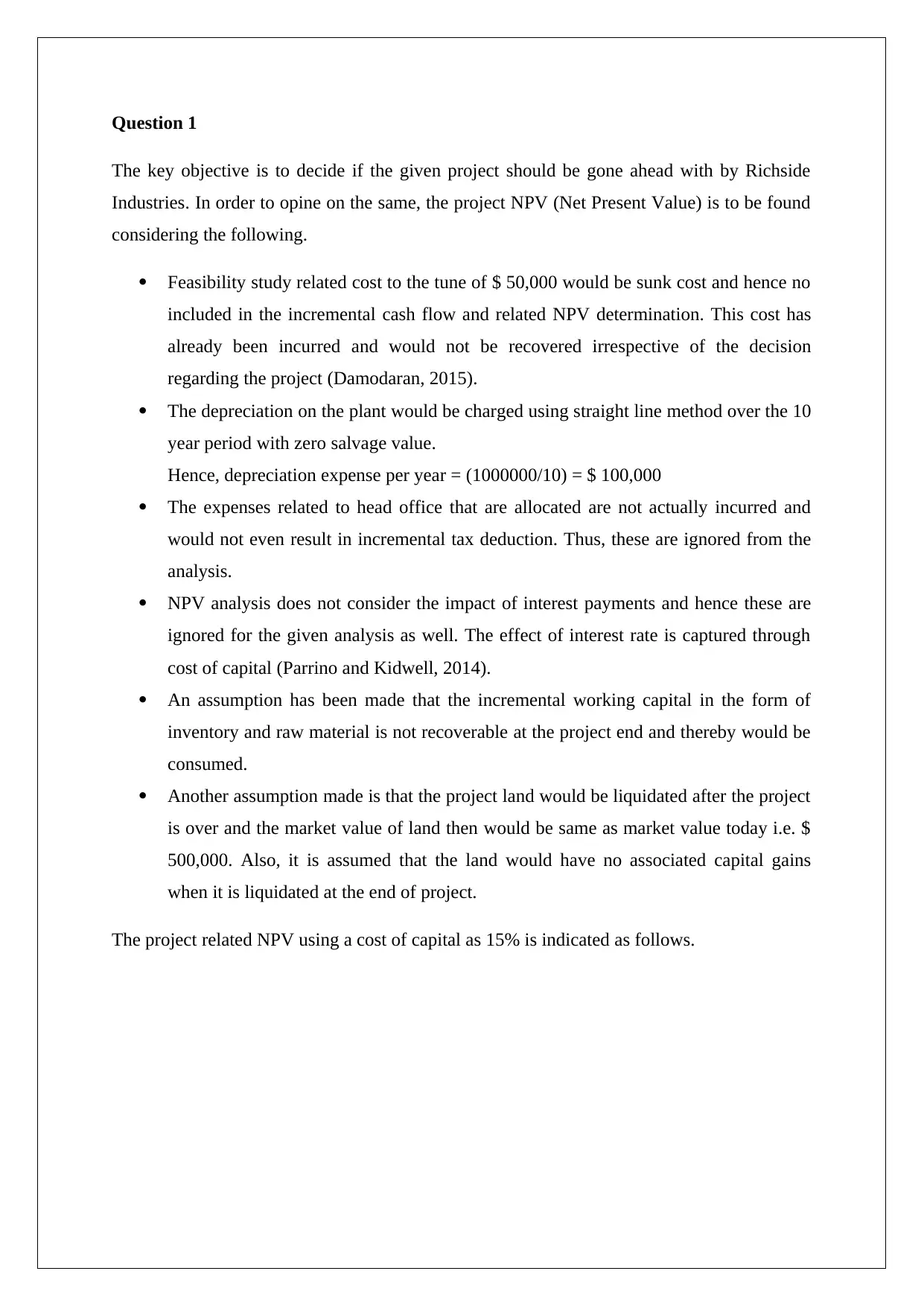Financial Analysis and Project Evaluation: Richside Industries
VerifiedAdded on 2023/06/03
|5
|655
|429
Report
AI Summary
This report assesses a project proposed by Richside Industries, utilizing Net Present Value (NPV) analysis to determine its financial viability. The analysis considers factors such as initial investment, operating expenses, depreciation, working capital, and the opportunity cost of land. The report excludes sunk costs (feasibility study), allocated head office expenses, and interest payments from the incremental cash flow analysis. It assumes the land will be liquidated at its current market value at the project's end and that the incremental working capital is not recoverable. The NPV calculation, using a 15% cost of capital, reveals a negative NPV, leading to the recommendation that Richside Industries should not proceed with the project. Furthermore, the report calculates the company's Weighted Average Cost of Capital (WACC) based on the Cost of Equity derived from the Capital Asset Pricing Model (CAPM), debenture costs, and mortgage loan costs, considering their respective weights in the company's capital structure.
1 out of 5










![[object Object]](/_next/static/media/star-bottom.7253800d.svg)